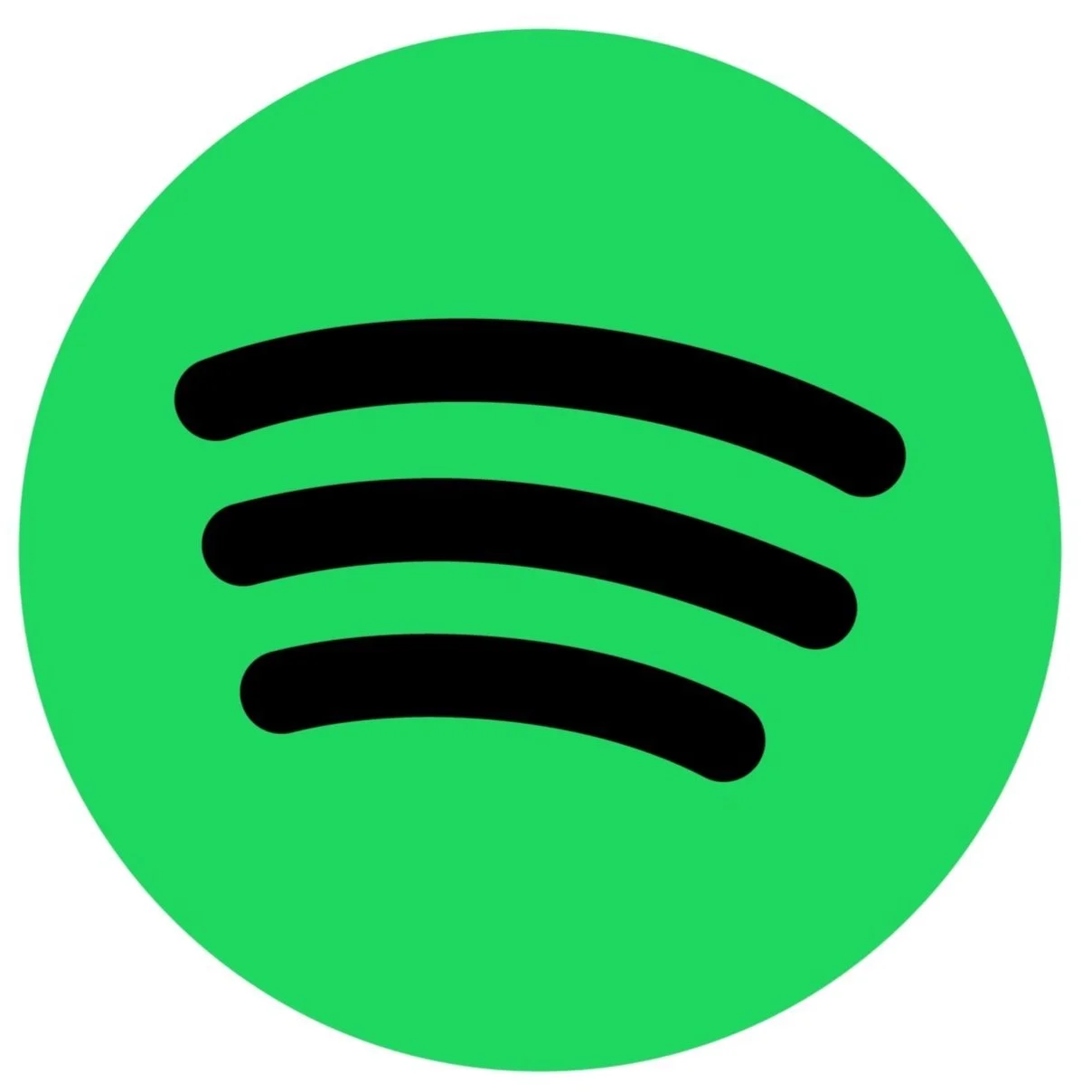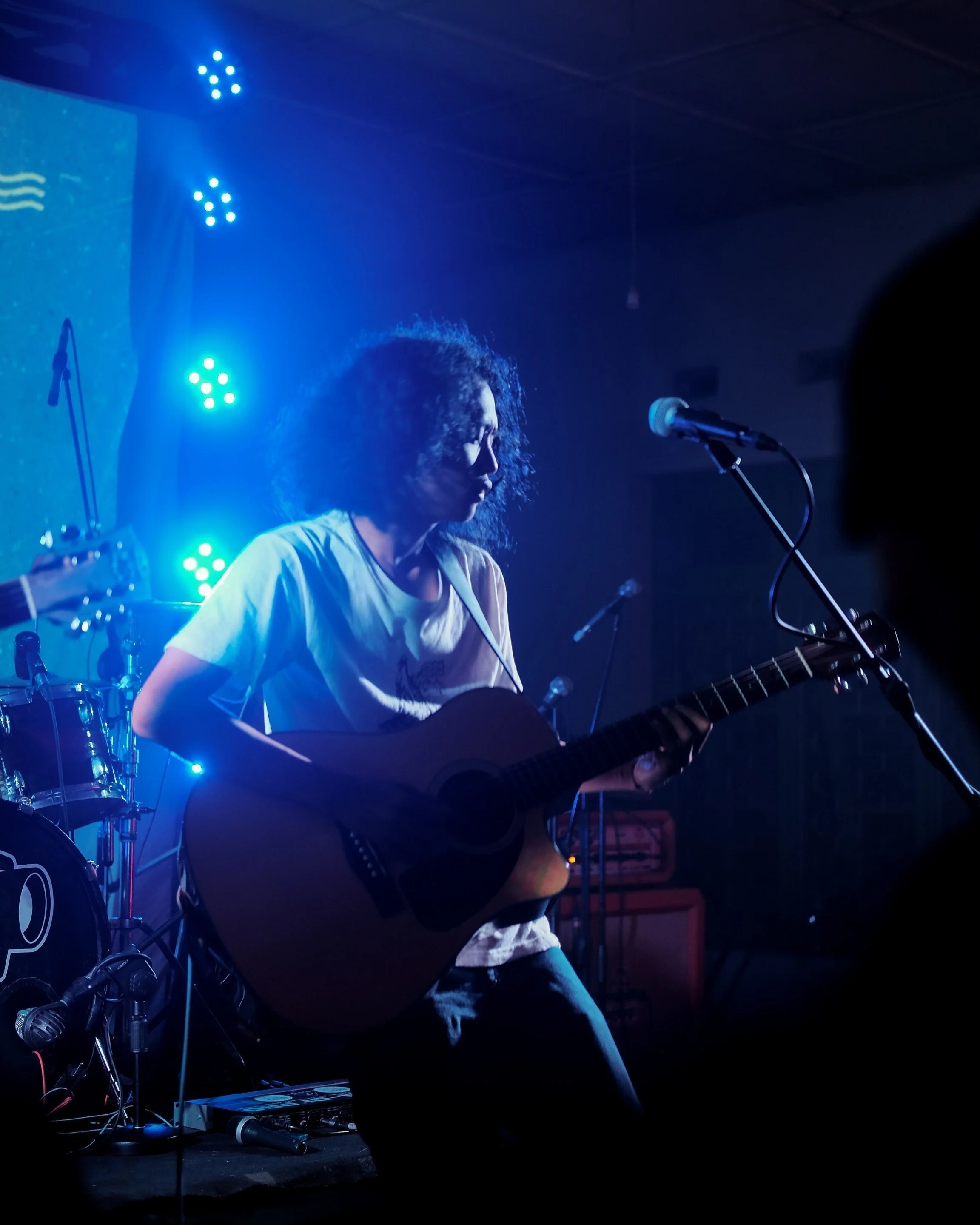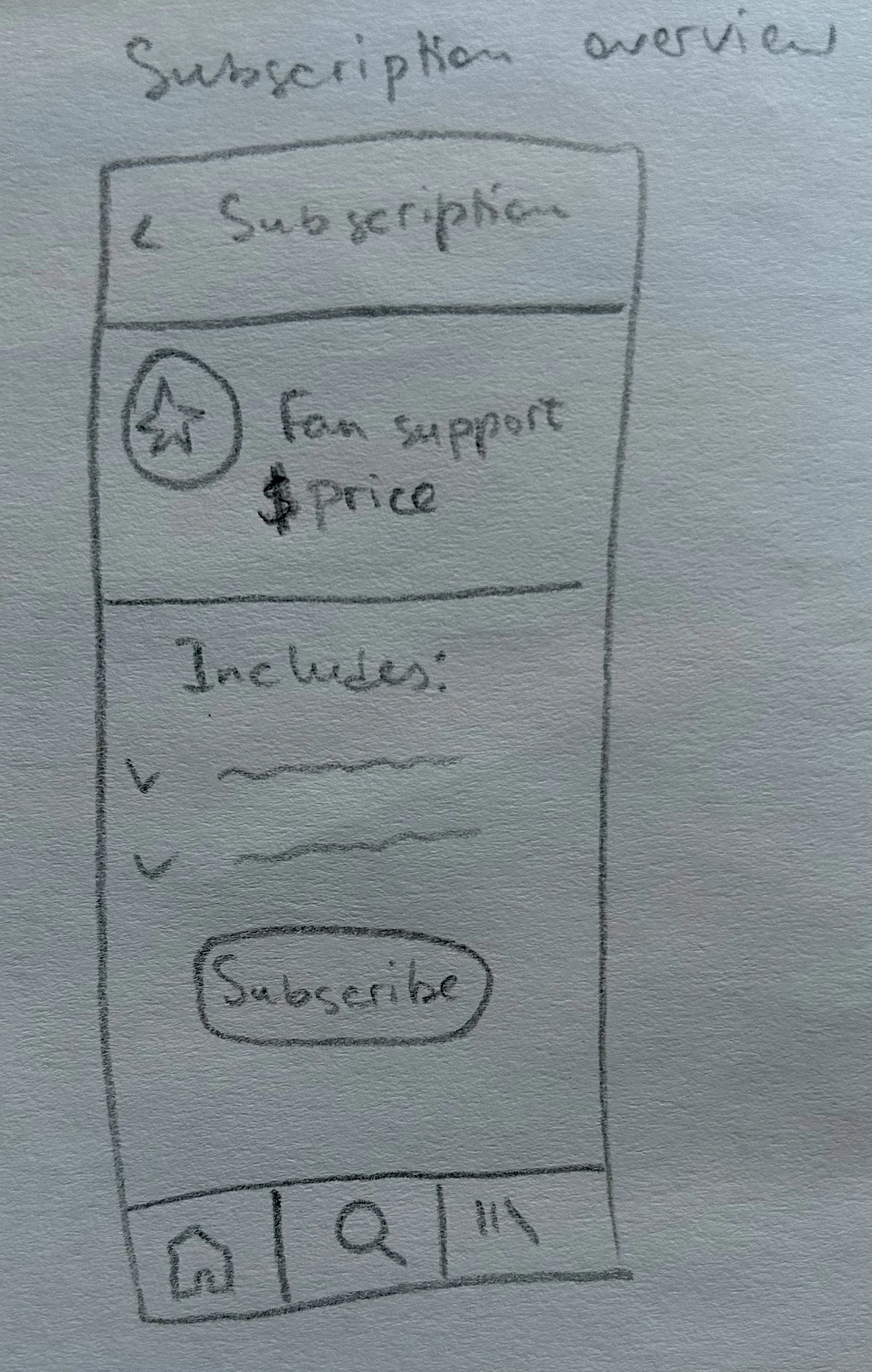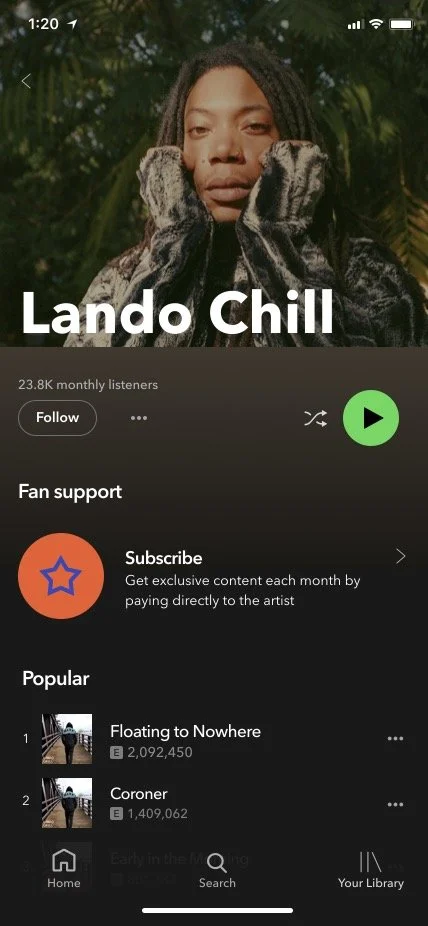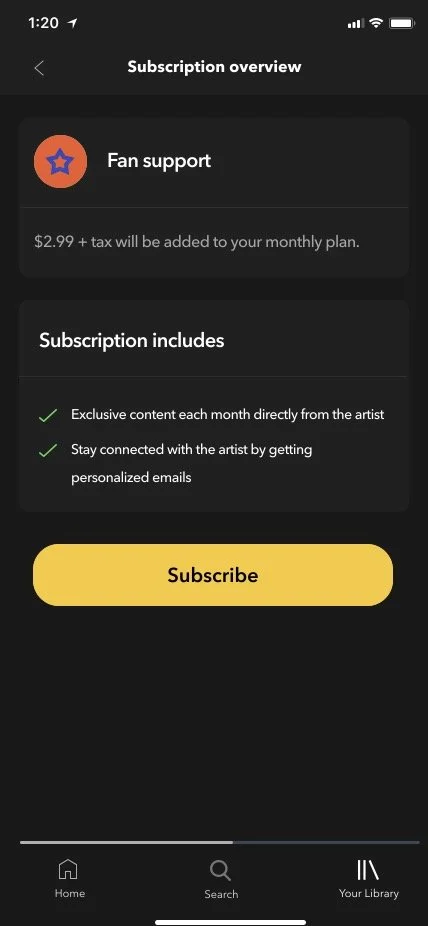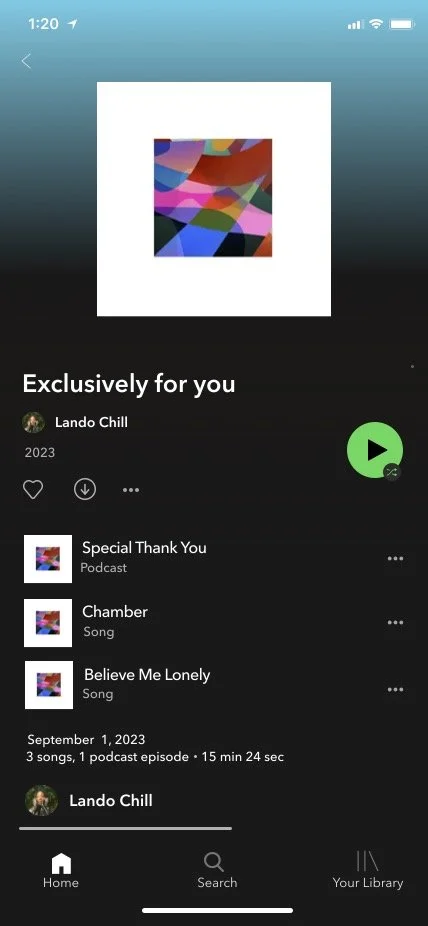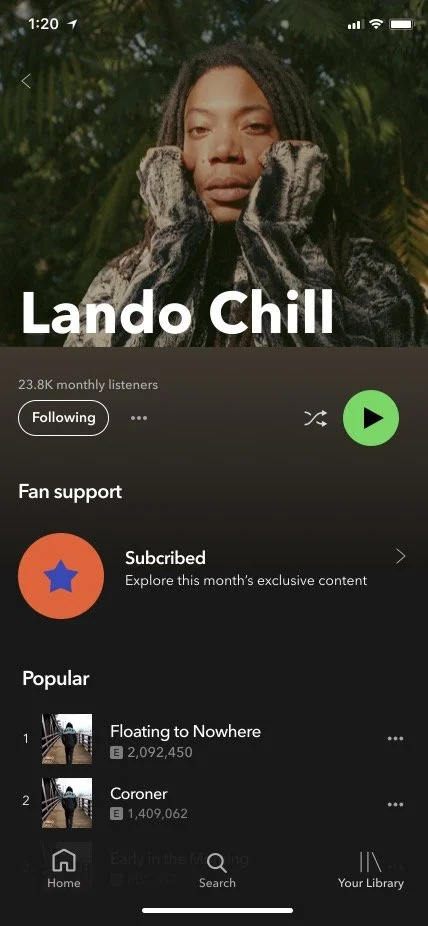

Spotify
Adding a feature • 4 weeks/80 hours
Introduction
The main problem I was trying to solve was optimizing independent artists' experience using both Spotify and Spotify for Artists. After witnessing many musicians' journeys in my circle of friends and acquaintances, I've seen how difficult it is for them to promote their work and get the exposure they desire and deserve.
I approached the research with an open mind and no bias. I was curious to see which specific challenges independent artists face – either the actual user experience when adding music and customizing their profile on Spotify for Artists or exploring how the artists could get more exposure and support so that more listeners could access their work on Spotify.
As for my role, I worked with the existing Spotify UI design structure, focusing on research, brainstorming, prototyping, and testing out the potential new feature.
Research
When it came to doing research, I spent time looking into and understanding the product itself, as well as performing competitive analysis and user interviews. I explored other streaming platforms such as Soundcloud and Bandcamp, as well as Patreon, which is the platform used to support independent creators.
With user interviews, I held conversations with a few artists of different levels of activity regarding their craft—actively touring and performing artists, plus musicians mainly focusing on showcasing their music online. I conducted both online and in-person interviews. I asked a variety of questions, starting with understanding the overall user experience of both Spotify and Spotify for Artists, learning about the positive and negative aspects of the platform, and then more specifically, asking questions concerning the musicians' challenges as they strive to gain maximum reach and exposure for their work.
The main insights I gained from my research were the artists' inquiries for more data on their listeners – mainly the zip codes and contact information. Moreover, I learned about the artists' struggles with getting on Spotify curated playlists, which are normally accessible to people managed by music labels. For them, it often feels like an exclusive club that is impossible to get into.
The main task was connecting the dots between what the artists want and need, and implementing that into the existing Spotify system with its rules and regulations. For example, avoiding taking the users off the app while connecting the artists with their listeners, and also keeping in mind Spotify's privacy policy while satisfying the musicians' inquiry for more listeners' data.
After the research, I created an affinity map, laying out all collected insights and sorting them into categories. While analyzing the similarities between different interviewees' answers, I was choosing which issue to focus on and which type of feature to develop – a simple "nice" addition, a "delight" that could improve the users' process but won't be substantial, or take a more challenging option for me, which could make more impact, and I chose the latter.
After the card-sorting exercise, I pieced together the elements for the potential solution, and it came together like a puzzle. I took an iterative approach and made the original version, then changed it based on feedback.
Define
I created wireframes that fit into Spotify's UI design system. Even though I was always crafting this project with the artists in mind, the final user personas have also become the Spotify listeners, as I ended up adding the feature to the actual Spotify app instead of Spotify for Artists. The feature fits Spotify's original layout.
Design
In terms of visual design, I didn't have a lot of freedom when it came to this project, except for creating the feature's icon, for which I had a couple of versions.
Color-wise, I went for bright and bold colors that fit Spotify's general color palette.
My favorite part of the process was polishing the UI and making the feature look and feel like it belongs in the app.
Visuals
Testing
I performed usability testing with people who use Spotify as listeners, but I also showed the wireframes to the artists to get their opinion and feedback on the overall concept of the feature, how useful it would potentially be, and also the visual design. I iterated on the wireframes based on the testing results, changing the layout of the content that would become available once subscribed.
Conclusion
It was a complicated task because I had to focus on both Spotify and Spotify for Artists. The most challenging moment for me was working with the research findings and brainstorming to find the best solution.
I learned a lot about my user and their experience with Spotify and showcasing and promoting their music in general. But my biggest takeaway has to do with creating the feature itself. What my user wanted the most was data and metrics, while the solution ties into what they could do with the data and how it could help them reach their goal—more support and exposure.
Of course, it’s difficult to say if my solution would bring the wanted results, as to see that would require real-life application of the feature. But overall, the feedback I received from the artists was very positive, and that’s what I’m most proud of.


